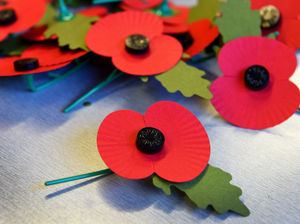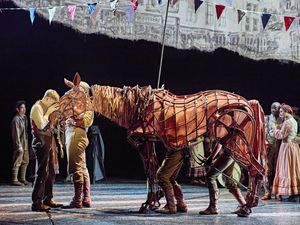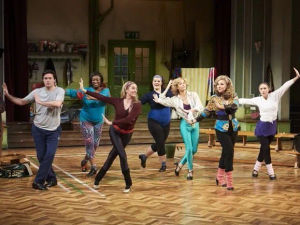100th Anniversary Armistice Commemoration, St Matthew's Church, Walsall - review
It's exactly 100 years since World War One ended at the eleventh hour of the eleventh day with some twenty million people having died in the conflict.

Each year nations, cities, towns, villages and parish churches have gathered to mark the occasion by honouring those that had given their lives for their countries.
But there has been over the past few years a subtle change in the way that perceptions have begun to change as to how the event should be celebrated.
As the bonds that keep Europe together have generally been strengthened the need for triumphalism has diminished. And while the music and marches have all served to remember the fallen it is the collective memory of that sacrifice which is beginning to become more pre-eminent.
The Tower of London moat filled with ceramic poppies, cathedrals, churches, whole streets and large trees decorated with hand-made poppies show how communities are coming together to remember the past. Dozens of etchings cut into the beaches surrounding this nation have also been an eye-catching symbol of how those memories can be preserved.
Wolverhampton Symphony Orchestra’s deceptively simple programme presented Fauré’s Requiem and Beethoven’s Symphony No 9 “The Choral” as its offering to the commemorations.
Fauré’s Requiem is a powerful plea for eternal rest. Though it begins with an Introit and Kyrie form which represents the particular genre at the end of the 19th Century, the composer begins to move away from the pain of separation and goes on to see death as the beginning of something new: a starting point rather than an ending. It also reflects the sadness and the horror of loss caused by the armed conflict.
The combined choirs included:- Tregorissimo from Lannion, Brittany, France; Jena University Choir (Germany); TotalVokal from Dortmund, Germany; Walsall Choral Society; City of Wolverhampton Choir; Wolverhampton Chamber Choir; Wolverhampton University Choir; Wombourne Choral Society; St Peter’s Wolverhampton Girls Choir; Dudley Choral Society and Sutton Coldfield Choral Society.
With young baritone Stephen Matthews giving a crisply articulate performance of his lines and the choirs giving some highly creditable versions of the composer’s flowing melodies, with some beautifully controlled tonal colouring, this was indeed a most impressive performance, especially the girls' choir in the Pie Jesu and the finale In Paradisum with its beautiful ascending soprano line.
The Beethoven is a totally different kind of music, full of power, intensity and rhythm. When it was composed Beethoven was stone deaf and could only pick up the faintest vibrations from his piano.
Nevertheless, the premiere of the work enthralled its audience on the day –though the composer could not tell what effect the music was having on the audience. Its message is that its words of joy and universality are a symbol of hope that war will never again ravage our nations.
While the brass sections may have had some slightly nervous moments this was a lively performance with soloists soprano Kathleen Ziegner, contralto Elisabeth Paul, tenor Tom Castle and baritone Benjamin Mahns-Mardy all contributing to a performance of considerable merit.
Perhaps the vocal lines became a little shouted towards the end, and Beethoven’s writing for the soprano lines is never very friendly, but what was important here was the spirit of the performance and what was exactly being celebrated.
It must be mentioned that the bringing together of some 400 performers, feeding them, sleeping them, transporting them, rehearsing them and finally getting them to produce a performance is a daunting undertaking and so all credit to those who have driven the idea forward and produced a most impressive occasion mainly WSO’s conductor Peter Morris and his wife Jane.





